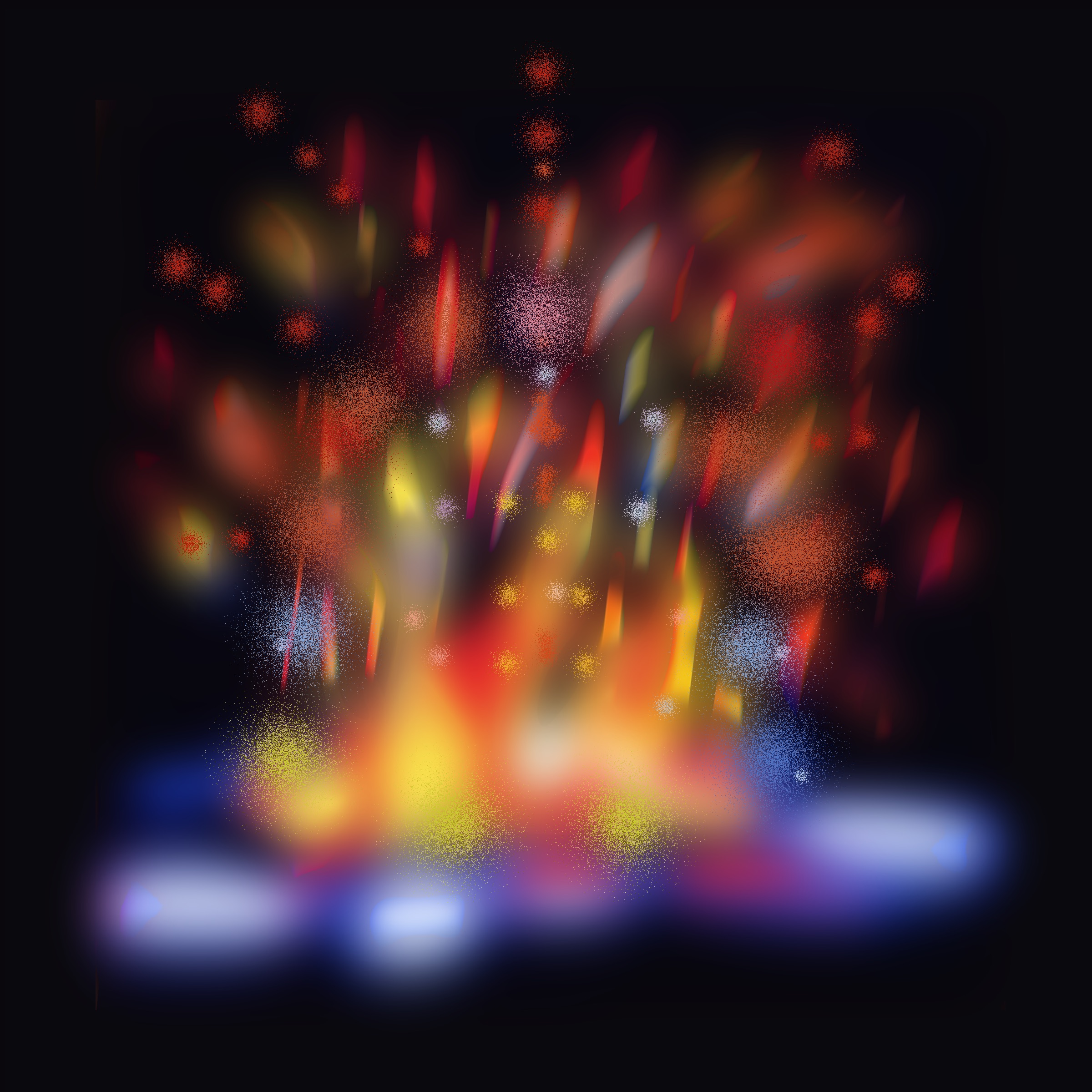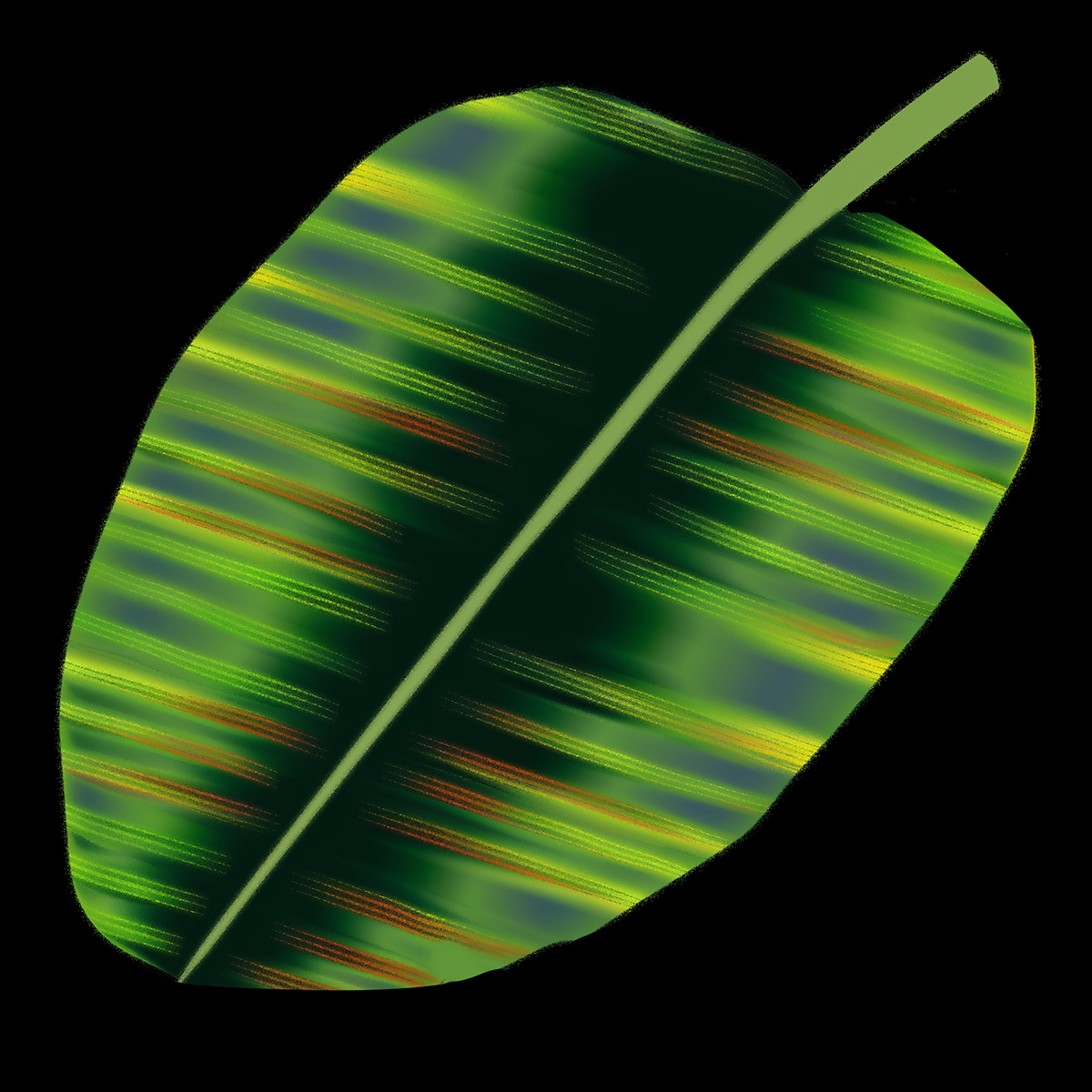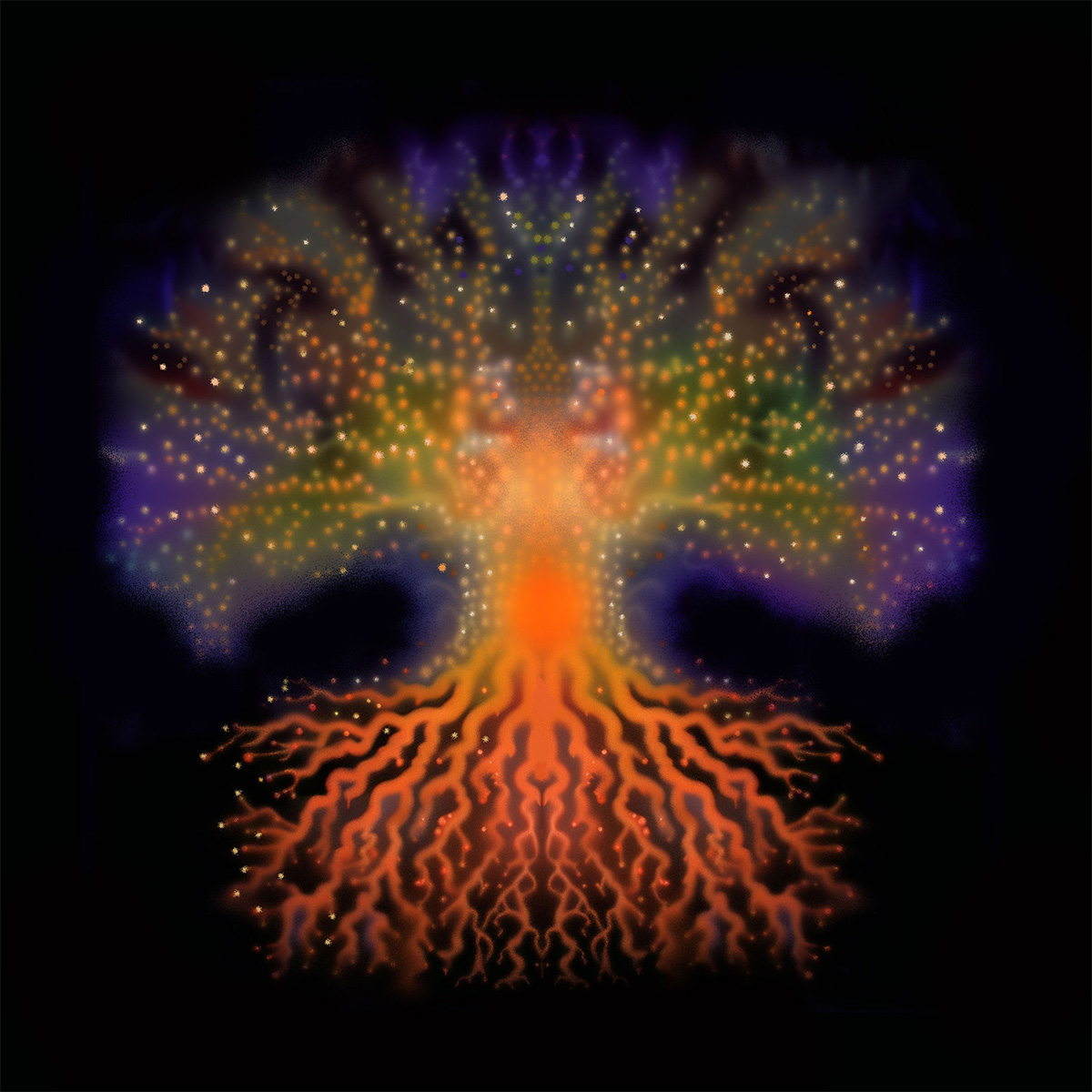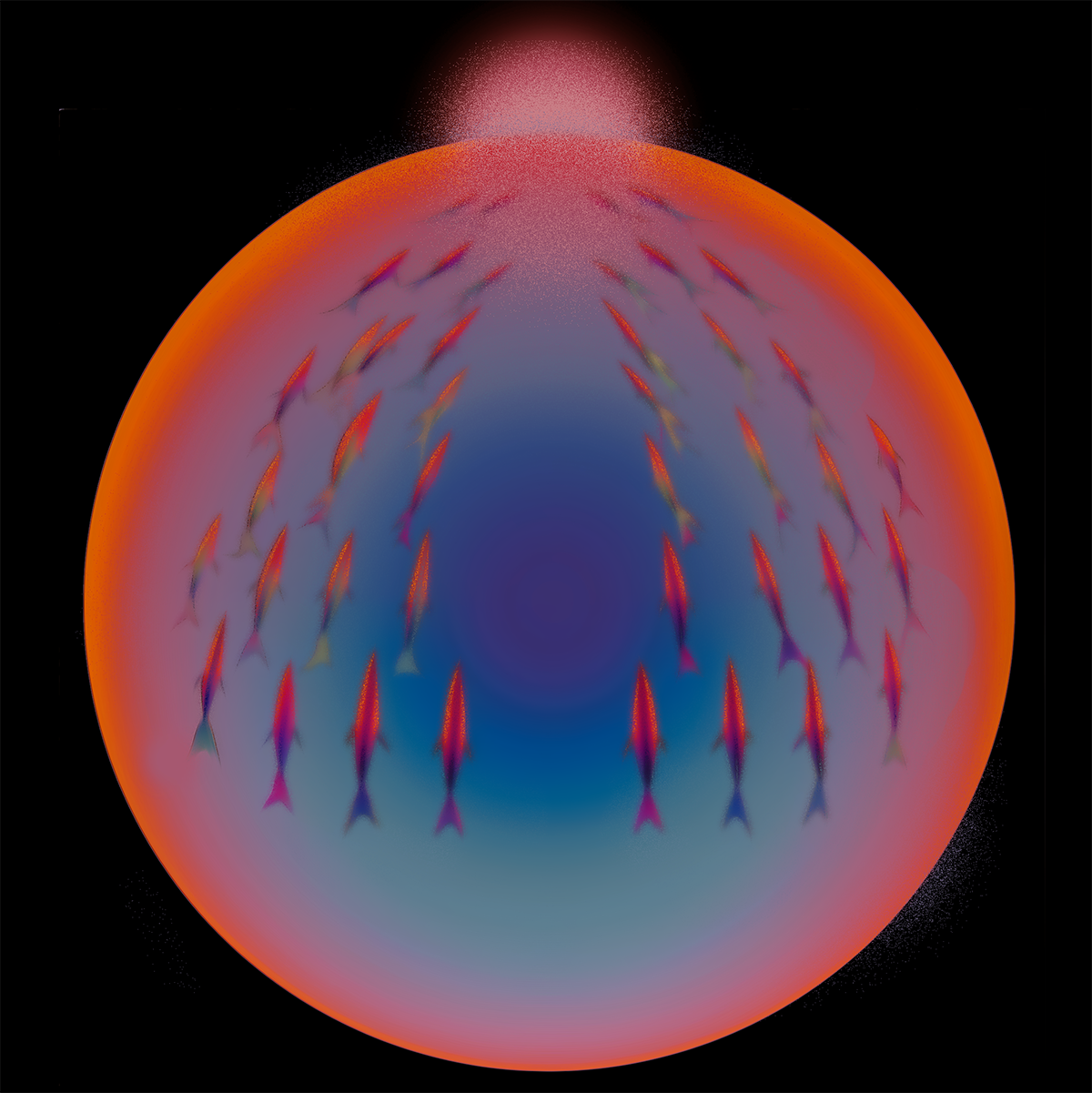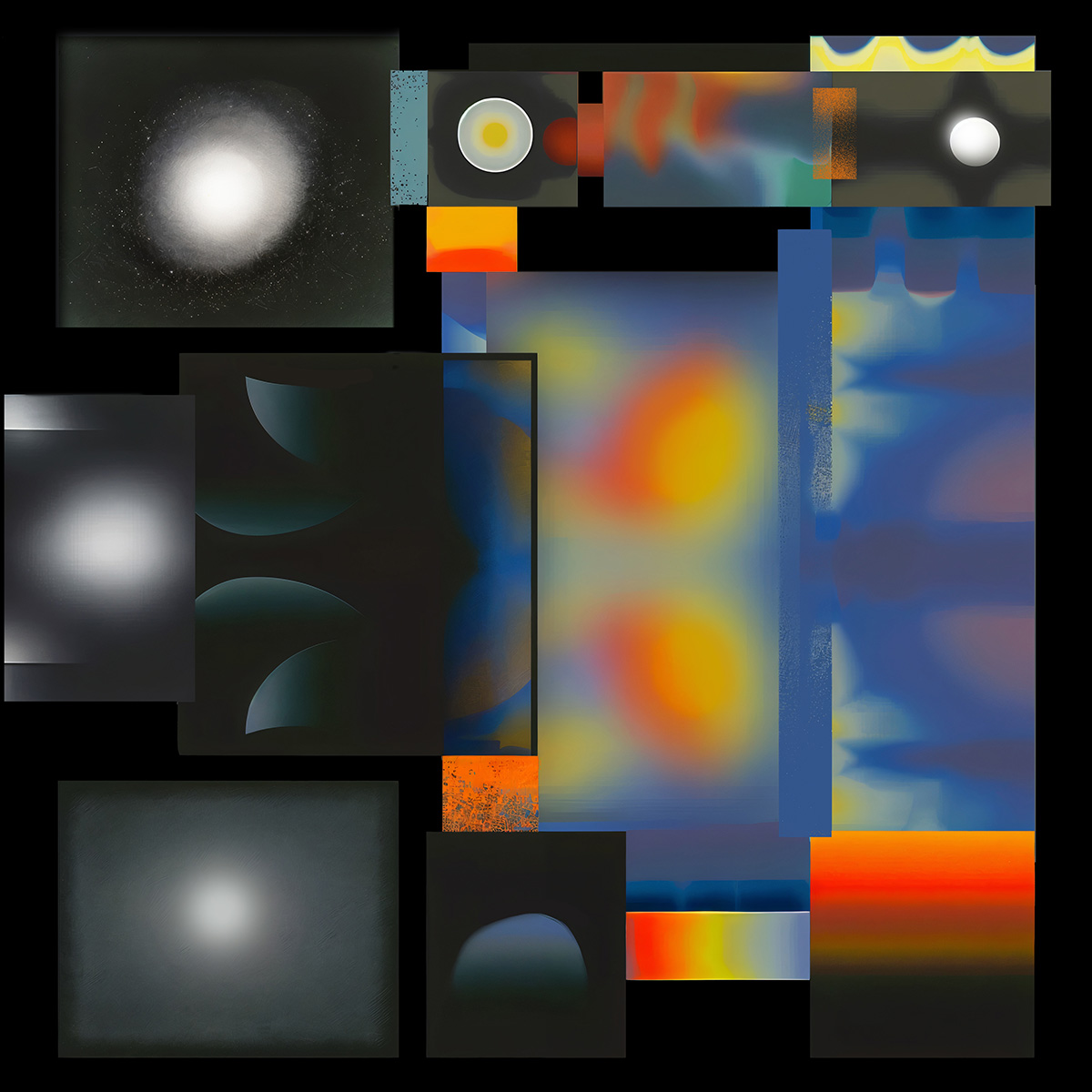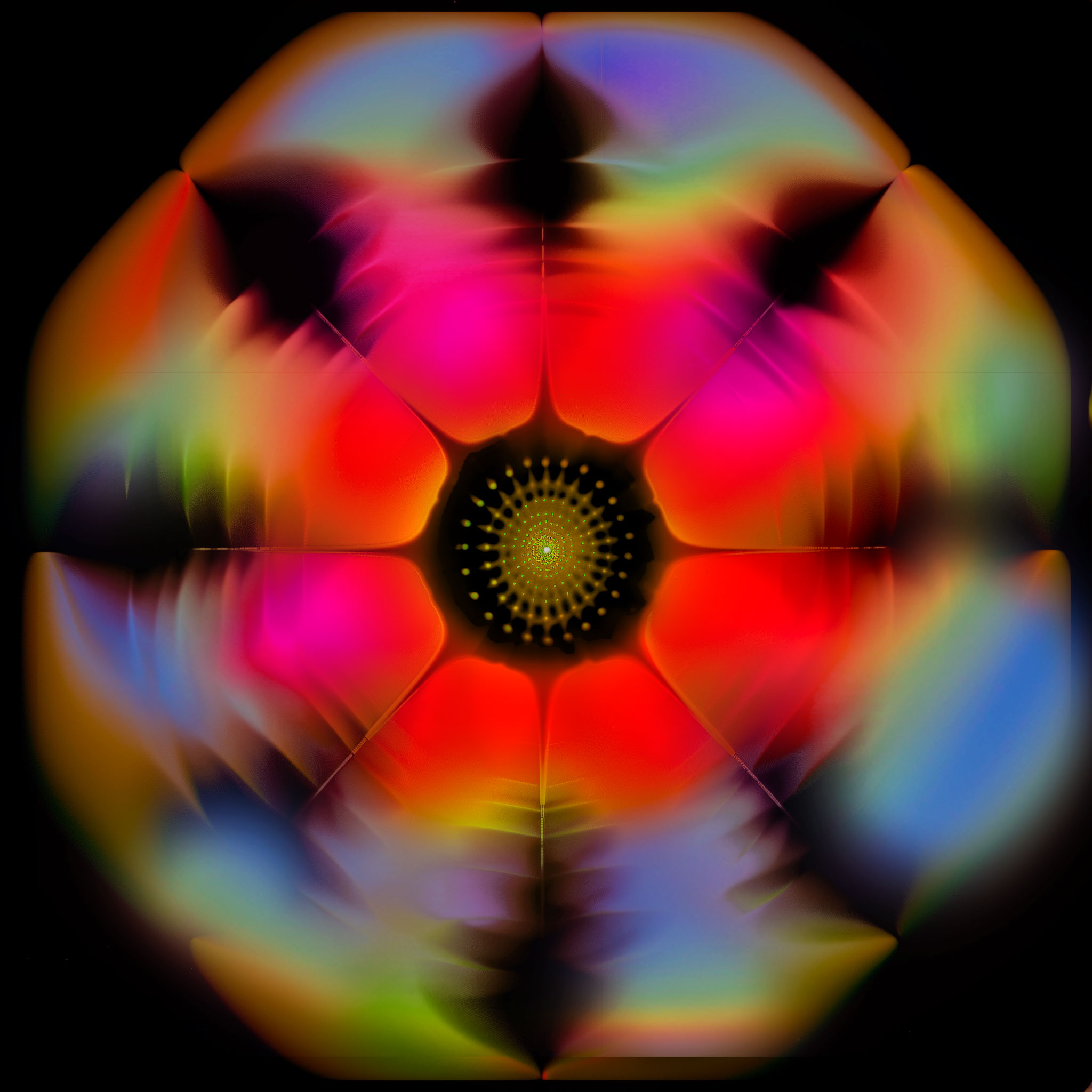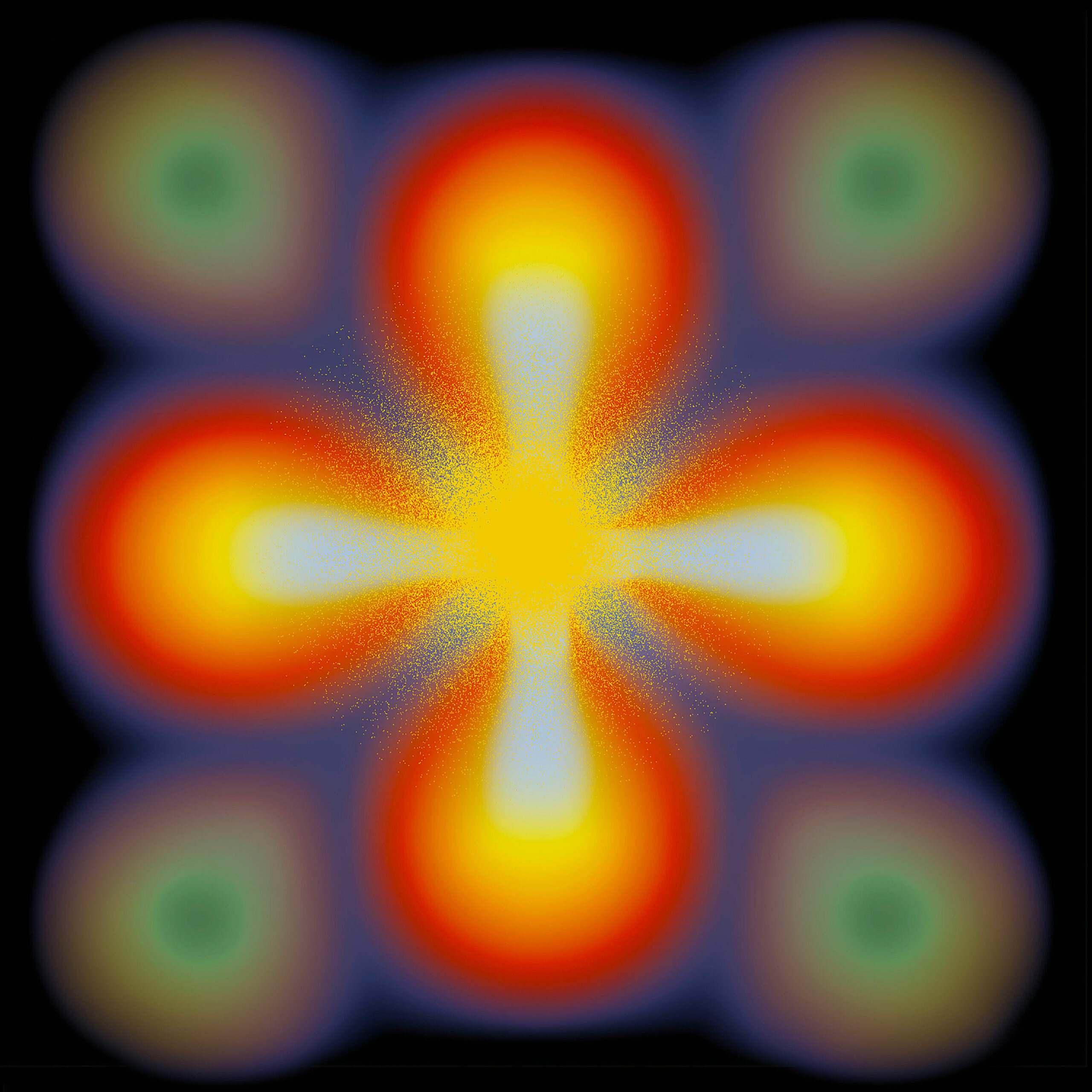Fire can roar and ravage, often indiscriminately destroying everything it interacts with: beetle, blossom, homes. Did you know that Fire can also cleanse and trickle like water? You’ve likely seen this nurturing Fire before, perhaps in a campfire. It’s the Fire that sizzles excitedly when it meets grass, wet wood or even plastic. It’s the Fire that slowly seeps from the edges of the campfire, meandering toward you before the ladders of twigs and coals meet bare mineral earth—no more fuel, no more Fire.
In the continent now known as Australia, we, Aboriginal and Torres Strait Islander Peoples, harness the power of this healing Fire. It is best known as cultural burning, but sometimes we call it cool burning or cultural Fire. You may know this practice too, as the First Peoples of many continents across the world reunite with their ancient practices of caring for the land. In Australia, we often use the phrase Caring for Country to encapsulate the myriad of ways we look after the land. Country refers to land, animals, plants and all the more-than-human Entities who are embedded within Country such as tides, winds, ant trails, the memories of trees, and the smell of rain diving off the edges of eucalypt leaves.
Country is a word that is steeped in relationality, the connective forces that understand all the world as Kin and our relationships between Entities as more important than the Entities themselves.1 Take Fire and cultural burning for example. You may like to paint a picture of me lighting some grass on Fire—human, grass, Fire. If you’re a very visual thinker this picture may include my brown curly hair, hi-vis yellow shirt and a scraggly old tussock grass beaming orange with Fire before melting into black ash. But as you’re painting this picture in your head there is a lot of detail missing—we need to add the glimmer of ocean to the north, more hi-vis shirts hugging the backs of humans who read Country with their eyes, noses, ears, and spirit, peering into tall grasses and plunging hands into soil. We should paint in the grey sky whose clouds are filling with water to release rain in the next few hours, and the little hand of my toddler in mine as they watch the ants, spiders, and roaches scurry up the tree trunks. Even now our picture is not complete—what of the smell of charred leaves from the smoking ceremony we did that morning to ask permission from Country to burn? What of the words whispered (and then bellowed) from my toddler “I want to go up the hill with Aunty!” Relationality here is not just human, grass, Fire; relationality is the thousand threads of connection between all Entities. These connections spiral across Entities and generations, between sky, land and sea and through past, present and future.
- 1. Wilson, S. (2008). Research is ceremony: Indigenous research methods. Fernwood Publishing.
Humans and more-than-humans have been burning Country for thousands of years—possibly over 100,000 years in Australia alone. Many Aboriginal communities even share Stories of Fire birds and other Entities burning Country without humans. Our lands are recognised as some of the most manipulated and heavily curated landscapes on earth, primarily through our practices of Fire.2
- 2. Fletcher, M.-S., Hall, T., & Alexandra, A. N. (2021). The loss of an indigenous constructed landscape following British invasion of Australia: An insight into the deep human imprint on the Australian landscape. AMBIO, 50(1).
Gammage, B., & Pascoe, B. (2021). Country: Future fire, future farming. Thames & Hudson.
I am passionate about cultural burning and relationality; it also underpins my research and teaching. I teach a graduate subject called ‘Decolonising Planning’, mainly for students completing a Master of Planning. We learn from many Indigenous thinkers in planning, design and architecture. Throughout the semester I implore my students to understand that any planning they do in Australia—whether it be urban planning, heritage assessments or commercial design—occurs on Aboriginal or Torres Strait Islander land. Everything they do as planners impacts Indigenous Peoples and Country—this is our land they are planning on.
Across the semester we learn about housing issues, colonial monuments, Country-centric design, cultural burning and relationality. In the final week we return to the Planning Institute of Australia’s definition of planning as:
“a dynamic field that’s all about improving quality of life and creating vibrant communities in which people love to live, work and play…[planners] balance the built and natural environment, community needs, cultural significance and economic sustainability to create better places and public spaces for everyone to enjoy.”
I then give my students a provocation—can we think of Caring for Country as planning? Can we think of cultural burning and Fire as design?
Caring for Country and cultural burning are indeed dynamic fields that are about improving quality of all life. This is one of the main distinctions we make with government and policy makers. Whereas dominant fire and land management practices prioritise human life and built assets before the environment, cultural burning prioritises Country as the cradle that holds and sustains all life. Cultural burning is also about creating vibrant communities. Vanessa Watts (Mohawk and Anishinaabe Bear Clan) reminds us that “habitats and ecosystems are better understood as societies”; they are our Kin.3
- 3. Watts, V. (2013). Indigenous place-thought & agency amongst humans and non-humans (First Woman and Sky Woman go on a European world tour!). Decolonization: Indigeneity, Education & Society, 2(1), 20-34.
When burning, we are often balancing many needs, that of the built and natural environment—ensuring the Fire stops before reaching houses and water tanks, making sure we don’t burn when trees are fruiting; thinking through community needs—who should to be involved and how can we facilitate that?; cultural significance—what are the cultural keystone species for this place and how do we nurture them; and economic sustainability—are cultural knowledge holders being paid for their time to Care for Country? How can we make this a self-sustaining enterprise that supports community?
Planning in settler-colonial places like Australia has too long been the remit of non-Indigenous Peoples. Planning, architecture and design, like land management practices, have relied on cookie-cutter practices imported from the colonial centre, often northern hemisphere places like western Europe. The streets of Sydney are lined with black-roofed terrace houses and London Plane trees, whose thirsty roots snake under petroleum-based asphalt in search of vast amounts of water that we simply do not have in this continent. In fact, the City of Sydney has committed to phasing out London Plane trees, in favour of, you guessed it, more drought tolerant native species.
Australia was invaded by the British over 230 years ago, and we are still witnessing non-Indigenous Peoples and industries wake up to the superpowers of Indigenous plants, animals, and most importantly —Indigenous Ways of Knowing, Being and Doing.4 Fire and Caring for Country are no exception.
- 4. Martin, K. L. (2008). Please knock before you enter: Aboriginal regulation of outsiders and the implications for researchers. Post Pressed.
Caring for Country is a multi-species, more-than-human planning. Tagalaka man and cultural fire practitioner Victor Steffensen notes that “applying fire and other practices to the landscape is done by the land communicating with the custodian”.5 This form of planning is not uni-directional or imposed upon the land. It is about reading Country (where does the water flow? Can we use that wallaby track as a containment line?), knowing the seasonal indicators (which tree is flowering? When will the fish be fat?), and looking for signs from Country to proceed (did you see that Eagle? Why is the Fire not lighting?). Caring for Country is a form of planning that takes into consideration all life. My Elders have taught me that everything comes from the land, and if it hasn’t arisen from the land itself, it is likely to end up there at the end of its days. Therefore, Caring for Country is not just about the land, it is a form of planning that extends to batteries, air conditioners, paper clips, and that plastic wrapper that sizzled in our opening campfire. Our future forms of planning must take the whole system into consideration, Caring for Country reinstates humans in their rightful place, as one Entity among billions.
- 5. Steffensen, V. (2019). Putting the people back into country. In J. Archibald, J. Lee-Morgan, & J. De Santolo (Eds.), Decolonizing research: Indigenous storywork as methodology (pp. 224-238). Zed Books.
Fire as design is also a multi-system approach. Our Old People (Ancestors, Elders) worked with Fire to create their butchery, bakery… and if you know the old English nursery rhyme, I suppose we could say they did this with “candlestick maker-y.” Fire was used to create superb grasslands that not only attracted animals like kangaroos but were designed in distinct channels that funnelled animals into the waiting arms of people wielding spears and clubs at the ready. We didn’t survive as the oldest continuing culture in the world by chasing kangaroos around all day! We designed the land to bring our food to us, including using Fire to create reliable fields of grasses for breadmaking and nutrient dense crops like murnong (yam daisy) for tubers.6 When humans work with, rather than against Fire, it is a design practice that nourishes all Country. Country is our home and we have been designing it for millennia.
- 6. Pascoe, B. (2014). Dark emu, black seeds: Agriculture or accident? Magabala Books Aboriginal Corporation.
Fire as design is also about understanding Fire as a sentient and agentic force—a designer in its own right. Our burning practices were described by early observers as mosaic burning, identifying Fire’s preference to burn in beautiful patterns that dance around grasses, leaving piles of nutrient-rich black ash alongside fully intact green grass. Why might Fire do this? Fire is part of Country, with its own agency to wreak destruction or cradle life. Cultural burning harnesses Fire’s nurturing nature, which in this case, chooses to keep food sources like grass available to other animals. Can you see? It is greed that harvests all the fruits, gobbles up all the water and burns all the grasses. Fire, when treated with care, is a whole-of-system designer. Caring for Country is more-than-human planning; designing and planning for all life.
Come, sit by the Fire. Watch this ancient designer in action, wielding sizzling scissors that cut through weeds and launching curated collections of nourishing grasslands. There are lessons here in how to adapt to our changing climates. Lessons we learn from Fire as design and Caring for Country as planning.
- 1. Wilson, S. (2008). Research is ceremony: Indigenous research methods. Fernwood Publishing.
- 2. Fletcher, M.-S., Hall, T., & Alexandra, A. N. (2021). The loss of an indigenous constructed landscape following British invasion of Australia: An insight into the deep human imprint on the Australian landscape. AMBIO, 50(1).
Gammage, B., & Pascoe, B. (2021). Country: Future fire, future farming. Thames & Hudson.
- 3. Watts, V. (2013). Indigenous place-thought & agency amongst humans and non-humans (First Woman and Sky Woman go on a European world tour!). Decolonization: Indigeneity, Education & Society, 2(1), 20-34.
- 4. Martin, K. L. (2008). Please knock before you enter: Aboriginal regulation of outsiders and the implications for researchers. Post Pressed.
- 5. Steffensen, V. (2019). Putting the people back into country. In J. Archibald, J. Lee-Morgan, & J. De Santolo (Eds.), Decolonizing research: Indigenous storywork as methodology (pp. 224-238). Zed Books.
- 6. Pascoe, B. (2014). Dark emu, black seeds: Agriculture or accident? Magabala Books Aboriginal Corporation.
